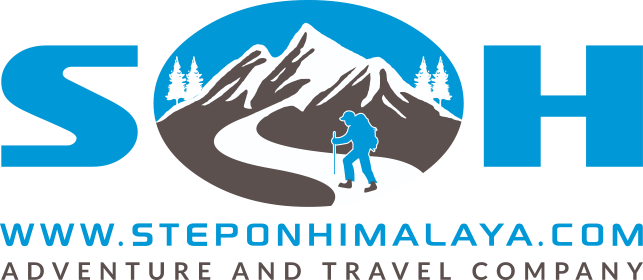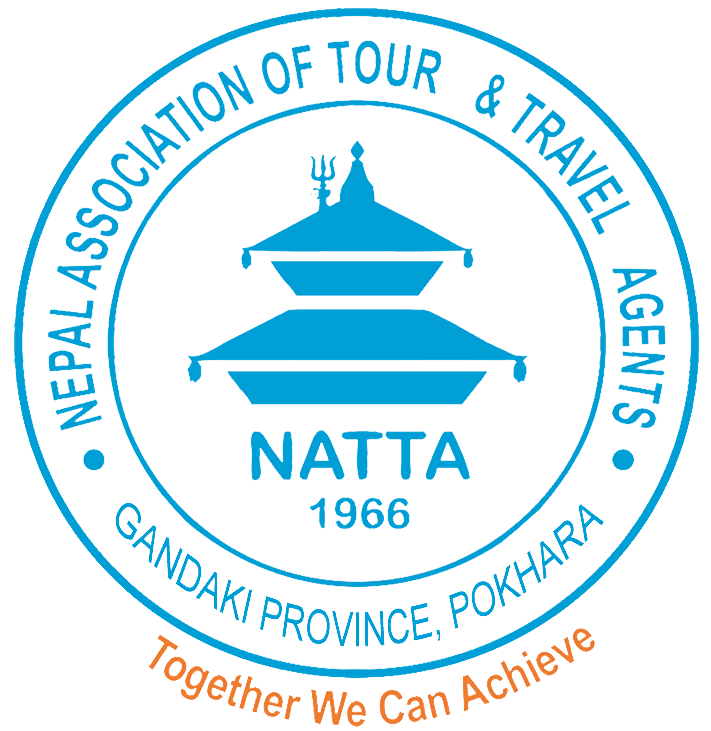
Hiring guides is mandatory from April 1; the Everest region made an exception
Hello and Namaste from the Himalayas of Nepal and Step on Himalayas team. Here is an important and official announcement made by the Nepalese government, particularly the Nepal Tourism Board that a trekker cannot go for a solo trek in the mountains. This is now officially prohibited. For further information, please read the full blog.
Nepal is beautifully blessed with the top 8 mountains in the world. There is no doubt nature has bestowed her blessings over Nepalese lands that are remarkably treasured and uniquely stunning. All trekkers, novice or experienced, dream of reaching the summit of Everest, the top of the world. Trekking has been a good source of income for the local people and hugely for the nation. Nepal has undoubtedly selected destinations for trekking and touring different corners of Nepal for ages. Unluckily, COVID brought a drastic change in the tourism sector that affected the livelihood of many people who were and are completely reliant on trekking for a source of income. The entire nation was adversely struck by COVID but the trekking sector was on the verge of culmination due to COVID which outburst in 2019.
The Nepalese government and the Nepal Tourism Board have banned solo trekking in Nepal for the past five years because of some circumstances that have been extended recently to unsaid time. Travelers or trekkers must hire a government-licensed guide or join a group before setting off to the mountains. It is now mandatory to hire a trekking guide which will be implemented from April 1, 2023. This may encourage the employment of people who solely depend on trekking for their earnings. Many trekkers avoid hiring trekking guides or any other assistants to cut off their expenses and try for budget travel. Walking alone in the strange highlands without any specific destination or plans is quite adventurous but as said, very risky. Hiring a guide seems to be safer rather than looking into ways of reducing travel costs. The main aim of these rules is to reduce the unfortunate incidences that have occurred in the past as the solo trekkers have either gone missing or sadly been found dead. The sole reason is they like to go to remote areas where no wonder they don't get any sort of help when they are trekking or touring alone as no one knows what has happened. Such free movements of trekkers are now strictly banned for safety concerns.
Some trekking agencies, registered with the government, have been applying the request and have demanded a halt and put an end to such unauthorized trekking operations and make a mandatory rule for hiring a trekking guide while in the mountains. Trekking alone is adventurous and spikes up your adrenaline but as the mountains are unpredictable, it is risky as well. According to the statistics, about 30% of trekkers or climbers go solo trekking without any guide. When trekkers go alone trekking remote and get lost, there is a high chance that they will be missing for a long time or found dead at the last. Experienced trekkers and climbers usually go up in the mountains without guides or a group but they do recommend participating in group trekking or being accompanied by a trekking guide if prefer to go solo trekking in the mountains.
The Nepalese government states and also regret that there is still a lag in the system to check on every trekker during their time in the mountains and Himalayas. The better way for the safety of trekkers is to register themselves and get the TIMS (Trekkers' Information Management Systems) before they initiate their trekking. TIMS is a card jointly issued by the Nepal Tourism Board and the Trekking Agencies Association of Nepal. Previously, there were 2 methods to go trekking. Firstly, the trekkers were allowed to go on a Solo trek via the "Free Independent Travel" (FIT) system taking the TIMS card without a trekking guide or a supporting staff. Thru this concept, the trekkers do not book their trek with any tour operator or trekking agency. They come on their own, and visit the mountains without any assistance. Exciting but as well risky and uninformative. Secondly, they can get the TIMS card for the group trekking via "Group Inclusive Travels" (GIT). But, now the FIT system is completely stopped, and can approach the trekking agencies for the GIT system only. TAAN (Trekking Agencies Association of Nepal) has updated that this may be a better way of secured and organized trekking for the safety of trekkers and also enhance the livelihood of trekking guides, porters, or people who are connected to trekking in different ways. TAAN also states that this method will employ about 50 thousand people who lost their jobs during the COVID crisis.
But, here is another update that cites EVEREST REGION IS STILL OPEN FOR SOLO TREKKING. There were many strong negative feedbacks from the would-be-trekkers and expert trekkers on social media regarding the news of banning Solo trekking in Nepal. Many trekkers who have visited Nepal frequently for trekking, mentioned that this is the coerced regulation to take a trekking guide and many trekkers have even said that they might not visit Nepal again due to such foolish rules as they are putting a leash over the trekkers. Also not to forget, everyone is not capable of affording guides as many plans for budget travel. Not only the trekkers but it was also highlighted by some senior tourism entrepreneurs and even officials of the board stating that these short-sighted decisions may bring some good for a short time and are often counterproductive as well but they later regret what would be the outcome of this decision.
The NTB along with 13 travel trekking organizations and trade unions of Nepal has decided to make the Everest region still open for solo trekkers despite the declared rule of trekking in Nepal only with a guide. There is a separate “TREK CARD” that costs NRs. 2000 per person for trekking in the Everest region. This card is issued by the Khumbu Pasang Lhamu Rural Municipality. The trekkers after receiving this Trek Card will be monitored at four check posts. But, Sagarmatha National Park still follows the rule of needing of guide while trekking. While the Annapurna Rural Municipality follows the decisions of the Nepal Tourism Board. This municipality manages a part of the Annapurna trekking region.
There are mainly 2 peak times of trekking throughout the year. The first is during March, April, and May. The second is September to December. During these months, the number of trekkers is very high and the flow of trekking especially to Everest, Annapurna, Langtang, Kanchenjunga, etc. is unquestionably very high. Trekking in these mountains is adventurous as well as risky which is why hiring a trekking guide has been mandatory now. The Nepalese government as well as the private Tourism sector have been focused on training the trekking guides who are to accompany trekkers and climbers for safe trekking. They must complete the one-month training course and as soon as completing the course, they should attend an exam. After passing the exam, they have to get registered as government-licensed Trekking guides.
Regarding the trekkers, they may feel limited as they are now unable to travel as they wish to but this surely is for the benefit of the trekkers and climbers, and also to keep in mind, it is an attempt to ensure their safety as much possible extent. The Nepalese government and the Nepal Tourism Board also share their sadness that they are not restricting access to the mountains but are trying to reduce the unforeseen and adverse incidents as the Nepalese geography is unique and can amaze anyone again and again. So, the Nepal Tourism Board and the Trekking Agencies Association of Nepal officially request as well as recommend to all trekkers and climbers, please make sure you do your trekking through authorized government license holder trekking agencies, register your groups before trekking to let the government know about your status, get the TIM card and take a well-experienced, registered trekking guide along with you for the safe trekking. It is an outreach and one step ahead to make sure for the trekkers' safety and hassle-free trekking in Nepal.
For further info, the fees charged to trekkers according to the Nepal Tourism Board and Trekking Agencies Association of Nepal are as follows:
Group Trekkers get a Blue TIMS card by paying a fee of NRs. 1000 per person.
FITs have to pay a fee for NRs. 2000 and get a Green TIMS card.
Likewise, those trekkers from SAARC regions have to pay NRs. 300 while FITs from SAARC nations have to pay NRs. 600 per person.
Author: Step on Himalaya
Date: 22nd March, 2023










